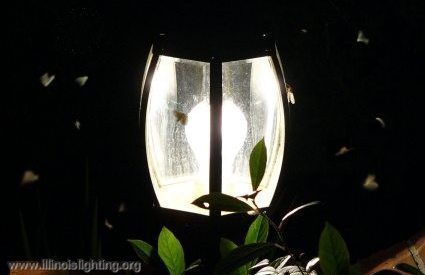Working toward legislation to curb light pollution in Illinois.
| Working toward legislation to curb light pollution in Illinois. |
||
|
Since the first living organisms appeared on our planet, the day/night cycle has provided the pulse to life on Earth. Vast numbers of species of plants and animals regulate key aspects of their life cycles by the regular changes from bright day to dark night. In comparison to the eons of time in which only the Sun, Moon and stars provided the light which governed the lives of most of Earth's organisms, the current period of our domination of the night with manmade light is just a momentary "experiment". Already, we are seeing the adverse results.
Additional Resources: | ||
The article Fireflies and Lightbulbs: Does Manmade Light Impact Ecosystems? on this website delves into these issues in greater depth. |
||
|
There are many articles and studies availble on the Internet about manmade light and nature. Below, we give links to some which we find to be well-written synopses of some of the topics touched upon on this page; you will find many more on the Resources> Links page of this website. 1 An April, 2002 article from Science News about ecology and manmade light. 2 A National Geographic 2003 article about manmade light and wildlife. 3A study on artificial light and bats, 2000. 4"A Silent Cry for Dark Skies", a 2008 article about manmade light and migration. 5the Fatal Light Awareness Program, dealing with lighting's threat to migrating birds. 6Wikipedia's article on photoperiodism. 7 Another introductory article about photoperiodism. |
Return to Page Top |
|||
light pollution Illinois Chicago Cook County DuPage County Will County Springfield energy enviromnent global warming anti light pollution legislation lighting ordinances |
|||



 While we may think of night as a time for sleep, in the natural world, night is a time filled with activity. While some
While we may think of night as a time for sleep, in the natural world, night is a time filled with activity. While some 
 The dark of night serves as more than just a time for activity in the natural world. The changing length of day and night through the seasons serve as a trigger for important actions for many organisms, including budding, flowering and fruiting in plants, and mating, migration and hibernation in animals.6,7 Artificial lighting at night can confuse an organism's sense of day and night, and disrupt its seasonal "clock"; that natural timing mechanism which has always served its species can be turned off by our careless filling of the night with our light.
The dark of night serves as more than just a time for activity in the natural world. The changing length of day and night through the seasons serve as a trigger for important actions for many organisms, including budding, flowering and fruiting in plants, and mating, migration and hibernation in animals.6,7 Artificial lighting at night can confuse an organism's sense of day and night, and disrupt its seasonal "clock"; that natural timing mechanism which has always served its species can be turned off by our careless filling of the night with our light.